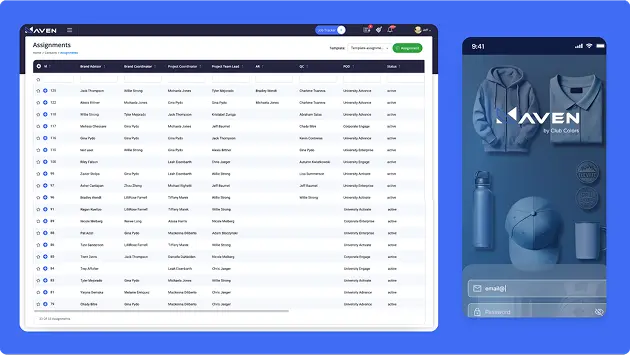
Chief Executive Officer

Secured OT infrastructure with an advanced threat detection framework.

Enhanced application security through vulnerability assessment and compliance.
As a leading cybersecurity consulting firm, we craft ironclad defenses through proactive threat hunting and rapid response protocols to keep attackers at bay.
Develop security roadmaps aligned with your business goals, maturity level, and risk tolerance capacity to provide security strategies that truly make sense.
Identify, assess, and prioritize cyber risks using frameworks like NIST and ISO 27005 to reduce attack surfaces and improve overall risk posture.
From application code review to DevSecOps advisory, we ensure your apps are resistant to OWASP Top 10 threats and zero-day exploits across the SDLC.
Implement encryption strategies, DLP tools, and access controls to safeguard sensitive data at rest and in transit, while aligning with sector-specific data regulations.
Our cybersecurity experts manage privacy programs, including consent management and cross-border data flow assessments to ensure legal defensibility.
We guide you through complex standards like HIPAA, SOC 2, ISO 27001, and PCI-DSS by risk and compliance assessment to ensure audit readiness.
Whether it’s AWS, Azure, or GCP, we conduct cloud security assessments and implement zero-trust models to secure workloads against misconfigurations.
We assess infrastructure vulnerabilities, review access policies, and deploy endpoint protection for robust IT-wide defense through our IT security consulting services.
With network security consulting services, we map out internal and perimeter networks to detect configuration flaws and implement IDS/IPS systems to prevent lateral movement.
We continuously monitor your digital footprint, simulate adversarial tactics, and correlate threat intelligence to detect and reduce your exposure across shadow IT ecosystems.
Our cybersecurity specialists conduct real-world breach and attack simulations to expose critical gaps across networks and applications and defend against potential attacks.
Work with a cybersecurity consulting agency that takes a proactive approach to securing your digital infrastructure from day one.
Get Proactive ProtectionWe enhance agility, minimize attack surfaces, and align cybersecurity and IT risk management with business goals through our expert-led consulting.
We tackle cybersecurity challenges by closing loopholes, modernizing protocols, and neutralizing insider threats with zero-trust strategies.
Align your cybersecurity strategy with business goals to ensure every dollar spent actively protects revenue streams and brand reputation.
Find and fix security blind spots 60% faster with compromise assessments services that map vulnerabilities to industry frameworks.
Stop wasting time on low-impact threats. With cyber risk management services, we rank risks by financial exposure so you can focus resources.
Our methodologies reinforce your cyber defense posture to withstand attacks through layered protection, proactive detection, and quick response planning.
From GDPR to HIPAA, we simplify complex compliance with security controls and documentation tailored for heavily regulated industries.
Embed contextual threat intel into your ecosystem to enable faster decisions and proactive defense against emerging attack vectors and malware variants.
We arm you with crisis simulations, cybersecurity governance, and recovery plans to turn vulnerabilities into unshakable operational strength.
Enforce least privilege access and streamline identity lifecycle management across hybrid environments to prevent unauthorized access and privilege escalation.
As a trusted cybersecurity consulting company, we implement AI-driven alerts and human-led containment to stop breaches before data theft and downtime occur.
Assess your cryptographic landscape, implement encryption standards like AES and RSA, and future-proof sensitive data using quantum-safe algorithms to mitigate risks.
Secure industrial environments by segmenting OT networks, deploying anomaly detection, and modernizing legacy systems from targeted cyber-physical attacks.
Using simulation exercises and up-to-date social engineering awareness content, we train your teams to recognize and report phishing threats.
Our trusted cybersecurity experts track compromised data across hidden web channels, alerting you to credential leaks, corporate IP theft, and active threat actors.
Enterprise leaders choose us for our real-time threat intelligence, hyper-customized roadmaps, and future-focused cybersecurity consulting precision.
Take action before it’s too late! Partner with a top cybersecurity consulting company to fix hidden threats.
Request a Security AuditAccess specialized cybersecurity consultants on-demand through hiring models tailored to your budget, project scope, and compliance urgency.
Perfect for well-defined projects. You get a clear timeline, set budget, and outcomes without surprises. It’s ideal when your cybersecurity scope needs predictable delivery.
Hire a full-time cybersecurity expert working exclusively on your project. This model works best when you need deep involvement, ongoing updates, and flexibility in timelines.
If your needs are dynamic or project scope may evolve, this model offers flexibility. You pay for actual hours and resources used, ensuring agility without long-term commitment.
We leverage future-focused cybersecurity technologies like SIEM, SOAR, XDR, and IAM tools to deliver enterprise-grade cybersecurity outcomes.
 Palo Alto Networks
Palo Alto Networks
 Fortinet
Fortinet
 Cisco Firepower
Cisco Firepower
 Check Point
Check Point
 CrowdStrike Falcon
CrowdStrike Falcon
 SentinelOne
SentinelOne
 Sophos Intercept X
Sophos Intercept X
 Splunk
Splunk
 IBM QRadar
IBM QRadar
 LogRhythm
LogRhythm
 Sumo Logic
Sumo Logic
 Tenable Nessus
Tenable Nessus
 Qualys
Qualys
 Rapid7 InsightVM
Rapid7 InsightVM
 OpenVAS
OpenVAS
 Prisma Cloud
Prisma Cloud
 AWS Security Hub
AWS Security Hub
 Microsoft Defender for Cloud
Microsoft Defender for Cloud
 Wiz
Wiz
 Okta
Okta
 Microsoft Entra ID (Azure AD)
Microsoft Entra ID (Azure AD)
 Ping Identity
Ping Identity
 CyberArk
CyberArk
 Burp Suite Pro
Burp Suite Pro
 Metasploit
Metasploit
 Kali Linux
Kali Linux
 Cobalt Strike
Cobalt Strike
We identify weak spots, fortify them with future-proof solutions, and keep defenses evolving, so your business never skips a beat.
Cybersecurity consulting is a strategic partnership. Simply put, it’s bringing in external experts to assess, strengthen, and future-proof your organization's digital defenses. Whether you’re a startup handling sensitive customer data or an enterprise managing global infrastructure, cybersecurity consulting companies help you stay ahead of threats that evolve daily.
Cyberattacks are no longer rare or random. They’re targeted, sophisticated, and potentially devastating. Here’s where cybersecurity consultants step in:
Cybersecurity consulting typically follows a step-by-step process. Here’s a quick look at how it unfolds:
Initial AssessmentUnderstanding your business goals, risks, infrastructure, and existing security posture.
Threat & Risk AnalysisPinpointing where you’re most exposed and what’s at stake.
Strategy DevelopmentCreating a roadmap of what needs to change, including tools, policies, and team awareness.
Implementation SupportGuiding or executing changes across your systems with minimal disruption.
Ongoing Monitoring & UpdatesSecurity is never a one-time fix. It evolves as your business and the threat landscape evolve.
If you're exploring cybersecurity support, you’ve likely come across two common terms: Cybersecurity Consulting and Managed Security Services (MSS). While both aim to protect your digital assets, they serve different purposes, and knowing the difference can save you time, money, and stress. Below, we have curated a comparison table so that you can understand easily.
| Aspect | Cybersecurity Consulting | Managed Security Services (MSS) |
|---|---|---|
| Primary Focus | Strategic guidance and planning | Ongoing monitoring and technical execution |
| When to Choose | You're building, rethinking, or upgrading your security posture | You need 24/7 protection without building an in-house security team |
| Engagement Style | Project-based or short-term advisory | Long-term, subscription-style service |
| Key Benefits | Clarity on risks Tailored strategies Compliance alignment |
Real-time threat detection Incident response System upkeep |
| Ideal For | Businesses facing audits, expansion, or major tech upgrades | Companies that want continuous defense and minimal manual overhead |
| Expert Involvement | Senior consultants and CISOs who provide high-level direction | Security analysts and engineers manage daily operations |
| Common Deliverables | Risk assessments, security roadmaps, policies, training, and incident playbooks | Threat alerts, firewall logs, patch management, and monthly reports |
Some businesses require both. An MSS team handles both strong strategy-driven execution and daily operations. The best approach to cybersecurity often blends both.
The digital world moves fast, and cyber threats move even quicker. One overlooked system, one outdated endpoint, and suddenly, everything’s at risk. That’s why today’s organizations can’t afford to think of security as just a firewall or an antivirus tool.
Every component in your IT environment is a potential entry point. Understanding what to secure is the first real step in staying protected. So, let’s walk through the critical areas you need to lock down.
| Endpoint devices (laptops, desktops, mobile) | Cloud environments (IaaS, PaaS, SaaS) | Databases and Data Warehouses |
| Email Systems | Web Applications and APIs | Network infrastructure (routers, switches, firewalls) |
| Data storage (on-premise and cloud repositories) | User identities and access privileges | IoT and OT devices |
| Smart contracts | Virtual Machines and Containers | Backup and Disaster Recovery Systems |
| Enterprise Resource Planning (ERP) Systems | Wireless Networks and VPNs | Physical hardware and data centers |
| VPNs and remote access tools | Source code repositories | Development and Testing Environments |
Securing your IT ecosystem is about safeguarding trust, reputation, and your ability to operate without disruption. However, a leading cybersecurity consulting services in USA can assess your infrastructure and provide necessary measures.
Cyber threats are targeted, evolving, and often devastating. One misstep can cost a business everything from ransomware lockdowns to data leaks. That’s where a cybersecurity consulting agency steps in. These experts predict, prepare, and protect. Let’s explore the top cyber threats they help you defeat.
These attacks hide malicious code in seemingly normal software, then silently sabotage systems and steal data.
Viruses, worms, and trojans:These are self-replicating programs that spread silently across systems. For example, the ILOVEYOU virus disrupted millions of Windows PCs globally.
Advanced persistent threats (APTs):These are stealthy, long-term attacks often sponsored by nation-states. For example, APT29 targeted US government agencies for months unnoticed.
Ransomware:They encrypt files and demand payment to restore access. For example, WannaCry paralyzed hospitals and banks in over 150 countries.
Spyware and keyloggers:They secretly track activity and steal sensitive information. For example, Pegasus spyware infiltrated journalists’ and officials’ phones.
When threat actors impersonate or misuse credentials, they gain control where they shouldn't.
Identity theftStealing credentials to impersonate users and access accounts. For example, the Marriott breach exposed millions of guest identities.
Insider attacksEmployees exploiting internal access to harm the company. For example, an IT contractor leaked Apple’s internal documents.
Unauthorized accessHackers gain entry to systems without permission. For example, a hacker accessed Tesla servers via a misconfigured backend.
Brute-force attacksRepeated login attempts until the right password is guessed. For example, attacks on WordPress sites using stolen admin credentials.
Hackers exploit weak input validation to inject malicious scripts or commands.
SQL InjectionInserting malicious SQL to manipulate backend databases. Example: Heartland breach exposed 100M+ credit card details.
Server-side Request Forgery (SSRF)Tricks servers into making unintended internal requests. For example, the Capital One breach exposed 80M user records via SSRF.
Cross-Site Request Forgery (CSRF)Forces users to perform unintended actions. An example is banking sites exploited to change user transaction settings.
Cross-Site Scripting (XSS)Injecting scripts into websites to hijack sessions or data. For example, eBay suffered repeated XSS attacks on listing pages.
Social engineering preys on human behavior. Attackers manipulate trust, urgency, or fear to trick people into giving up sensitive information or access.
PhishingFake emails that trick users into clicking malicious links. For example, a Gmail phishing email mimicking the Google Docs login page.
Spear phishingTargeted emails customized with personal data to deceive. For example, hackers used LinkedIn info to target company CFOs.
VishingIt is a voice call impersonating support or officials asking for data. An example is fake bank calls asking for card verification numbers.
SmishingSMS messages with malicious links or false offers. For example, texts mimicking courier services for fake tracking links.
WhalingExecutive-targeted phishing scams using business-specific lingo. For example, CEOs get spoofed emails asking for urgent wire transfers.
Business Email Compromise (BEC)Hijacked email accounts are used to defraud companies. For example, a $47 million loss at Ubiquiti via fake vendor invoices.
These threats exploit weak points in network communication, stealing or disrupting data during transmission, or intercepting user activity mid-flow.
DoS and DDoS attacksThey involve overwhelming servers that shut down access or services. An example is GitHub’s 1.35 Tbps DDoS attack in 2018.
Session hijackingSteals user session tokens to take over web accounts. For example, attackers hijacked Facebook sessions through browser extensions.
Man-in-the-middle (MitM) attacksThey secretly intercept communication between two parties. For example, hackers spied on hotel Wi-Fi using fake portals.
Replay attacksAttackers reuse intercepted data to impersonate valid user activity. For example, attackers reused login data from unsecured payment apps.
Packet sniffing and eavesdroppingMonitor network traffic to steal sensitive information. For example, attackers sniffed credentials over unsecured Wi-Fi in cafés.
Protocol exploitation and manipulationThe abuse of DNS or IP protocols to mislead systems. For example, DNS spoofing rerouted users to a fake banking site.
Today, organizations operate in an increasingly regulated digital landscape. The pressure to stay compliant is real, whether it's GDPR, HIPAA, PCI-DSS, or ISO standards. Falling short can cost you millions in fines and, more importantly, damage your reputation. That’s where cybersecurity audit services step in as your compliance compass.
Compliance frameworks are often filled with legal jargon that can overwhelm even tech-savvy teams.
Missing a control or having weak access policies can get you flagged fast.
Regulations evolve, and so should your security strategy.
Cybersecurity isn’t something you want to gamble with. An experienced cybersecurity advisory & consulting services provider can help you stay ahead of evolving threats, simplify compliance, and keep your business running smoothly. But with so many firms out there, how do you choose the one that actually fits your needs? Here’s how to narrow it down with confidence.
Every industry has its own risks and compliance demands. You want a partner who understands both.
A good cybersecurity agency doesn’t just talk the talk; they’ve got the credentials to back it up.
Even the best security advice falls flat if it’s not understood or embraced.
Choosing a cybersecurity consulting firm isn’t about picking the biggest name. It’s about finding a true partner who understands your business, earns your trust, and empowers your growth.


From fintech startups handling sensitive transactions to healthcare platforms managing patient data, any business dealing with digital operations, compliance, or user trust can greatly benefit, especially those scaling fast or facing strict regulatory scrutiny.


Absolutely! After the initial assessment, we don’t just walk away. We offer continuous monitoring, regular audits, and threat updates to ensure your defenses evolve alongside emerging risks and business changes.


We leverage a mix of SIEM platforms like Splunk, endpoint detection tools like CrowdStrike, and threat intelligence feeds from Recorded Future—plus custom scripts and zero-trust frameworks tailored to your tech stack.


We've partnered with industries like banking, eCommerce, healthcare, and logistics, especially those facing complex compliance challenges like HIPAA, PCI-DSS, and GDPR. Each project involved industry-specific threat modeling and mitigation strategies.
Let’s create something extraordinary together.

Explore our latest blogs - a blend of curated content, and trends. Stay informed, and inspired!
In this article, we will explore how manufacturing cybersecurity is more critical than ever before …
Written by:
Chief Executive Officer
This blog discusses the need for cybersecurity in the healthcare industry, challenges in protecting patient data, and offers solutions to create a robust defense system for hospitals and clinics …
Written by:
Chief Executive Officer